You are here
New Releases
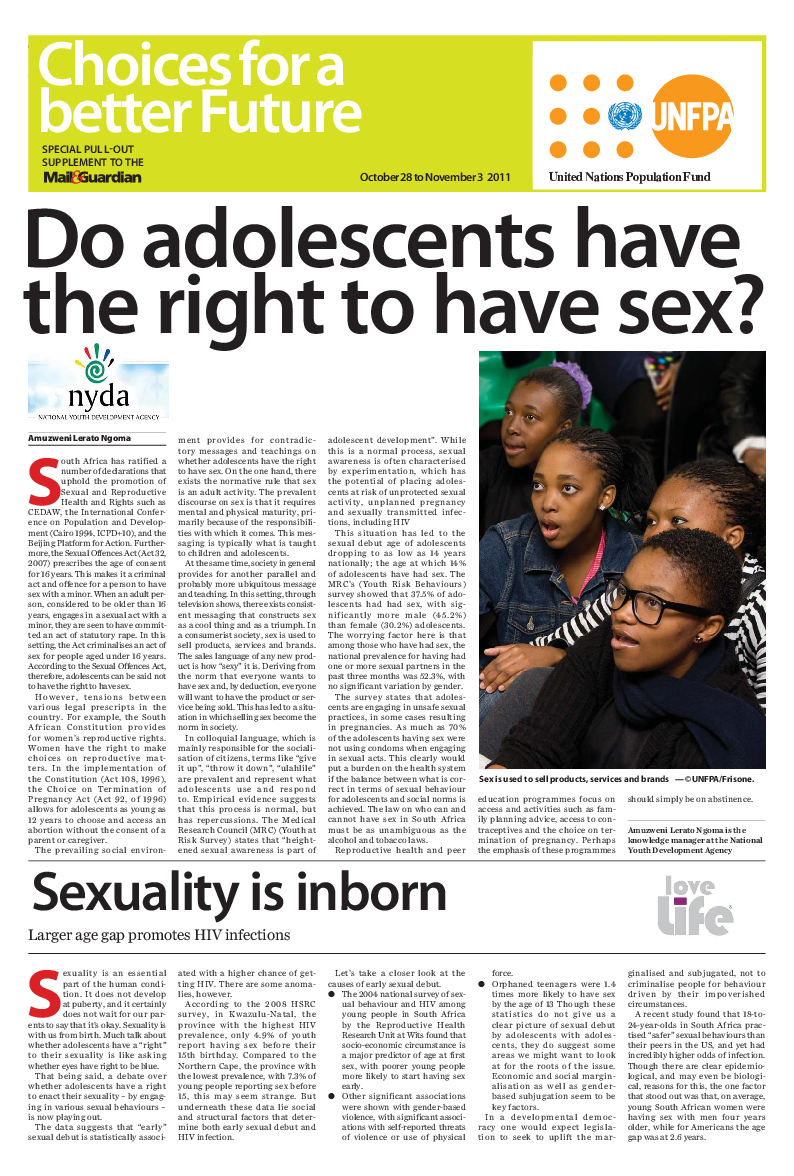
Do adolescents have the right to sex?
Read this special pull-out supplement to the Mail & Guardian Newspaper of 28 October 2011 on a public debate on whether adolescents have the right to sex. Produced by the UNFPA South Africa Country Office and its South African partners National Youth Development Agency, Love Life, SANAC Women's Sector and Soul City.

Survey of Availability of Modern Contraceptives and Essential Life-Saving Maternal and Reproductive Health Medicines in Service Delivery Points in Sierra Leone
Sierra Leone has a population of about 5.7 million, with an annual growth rate of 1.8 per cent and a doubling time of only 37 years. The high proportion of youths in the population has set in motion a high growth inertia for the coming generation, even if the fertility rate were to slow down to a normal replacement level. This is reinforced by entrenched socio-cultural stereotypes that favour large family sizes.
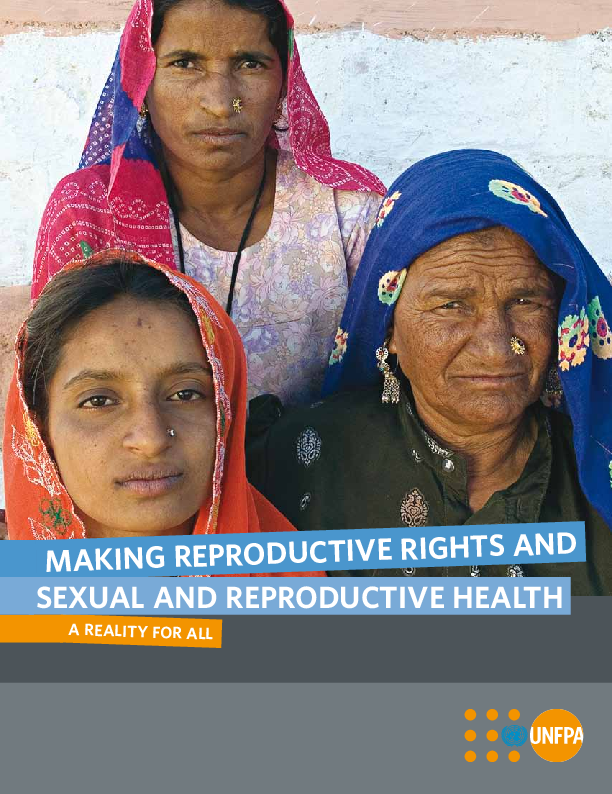
Sexual and Reproductive Health Framework
This report provides overall guidance and a cohesive Fund-wide response for implementing the Reproductive Health and Rights elements of the UNFPA Strategic Plan 2008-2011. The framework builds on the goals of the International Conference on Population and Development,1994; the Millennium Summit, 2000, with its adoption of the Millennium Development Goals; the 2005 World Summit; and the addition, in 2007, of the goal of universal access to reproductive health to MDG 5, for improving maternal health.
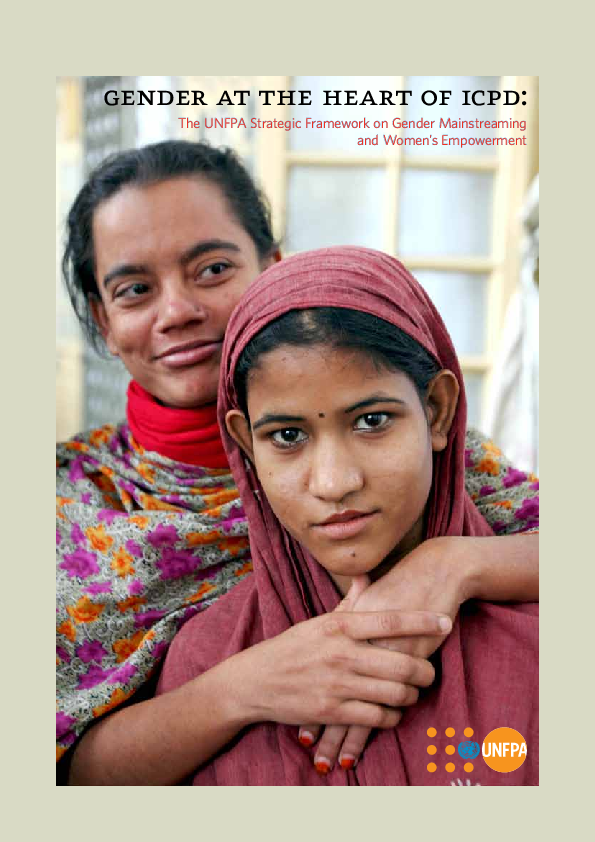
Gender at the Heart of ICPD
This document presents UNFPA's Strategic Framework on Gender Mainstreaming and the Empowerment of Women. It reflect lessons learned from a 2008-2009 capacity assessment exercise, as well as the need for an increased focus on gender in the context of addressing the goals of the International Conference on Population and Development. The Framework outlines UNFPA's policy and programme priorities for the empowerment of women and girls and for incorporating a gender perspective across the organization's work.
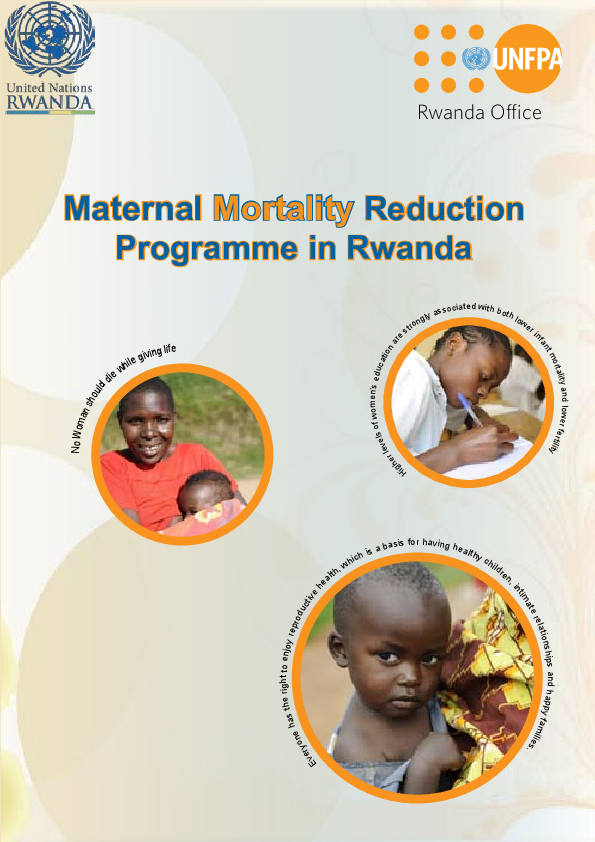
Maternal Mortality Reduction Programme in Rwanda
The health sector in Rwanda has made significant progress in recent years. Reproductive health, including family planning and maternal health, is a priority in the Ministry of Health Strategic Plan. The fight against maternal deaths is a concern in Rwanda and registers as one of Rwanda's MDG priorities.
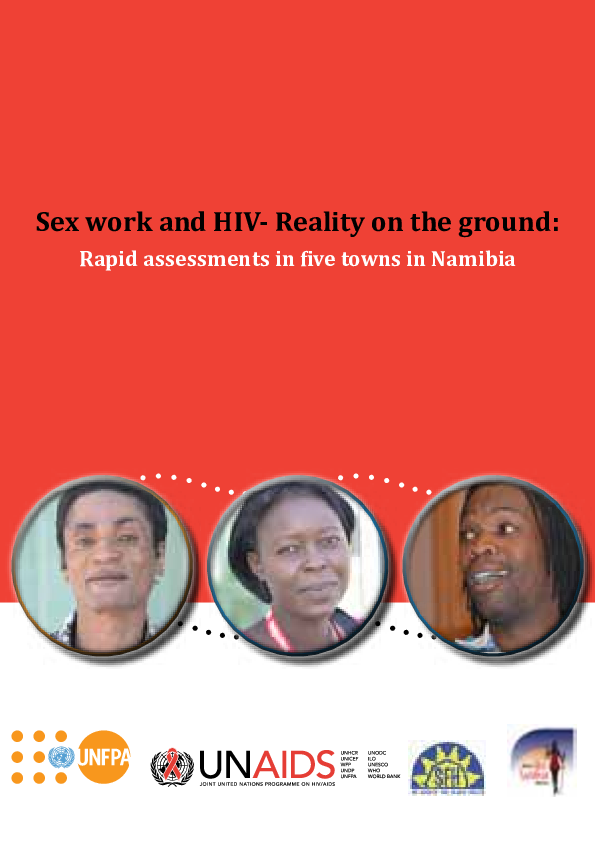
Sex work and HIV - Reality on the ground:
In October 2011, UNFPA, UNAIDS, SFH and a number of Namibian sex worker organizations conducted a series of rapid assessments on sex work and HIV in five towns in Namibia. The aims of the rapid assessment project were to engage sex workers in assessing barriers to HIV prevention and treatment and proposing relevant solutions in five towns in Namibia; to build the capacity of sex worker leaders and organizations at national and local levels; and to demonstrate good practice in community participation and empowerment approaches.
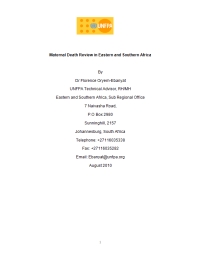
Maternal Death Review in Eastern and Southern Africa
Maternal Death Review (MDR) is a key element for improving the quality of maternal health care services by focusing on the preventable causes of deaths and what could have been done to avert the death. MDR does more than count maternal deaths; it looks beyond the numbers to study the causes and avoidable factors behind each death, leading to actions to improve quality of care and address factors that could have contributed to the death based on the findings. Universal reporting of maternal death is an important element of health management information systems as long as it leads to the allocation of resources to address the gaps.
Sub-Regional PMTCT Capacity Building Meeting On Primary Prevention of HIV & Prevention of Unintended Pregnancies
The Eastern and Southern African sub-region has more than 60% of the globalburden of preventing mother-to-child transmission (PMTCT)of HIV and has 15 of the 25 high burden countries. Additionally, HIV-related conditions have become the leading cause of maternal and child mortality. Remarkable progress has been made in the implementation of PMTCT strategies to reduce the risk of mother-to-infant transmission from nearly 40 per cent to under 5 per cent. However, much more needs to be done in the area of primary prevention of HIV and prevention of unintended pregnancies among women living with HIV, where UNFPA is expected to provide leadership.

The Global Programme to Enhance Reproductive Health Commodity Security
The Global Programme to Enhance Reproductive Health Commodity Security (GPRHCS) provided sustained multi-year support to 11 Stream 1 countries and funded targeted initiatives in 34 Stream 2 countries. In total, the Global Programme focused on 45 countries, a deliberately tighter focus than the previous year.
The State of the World's Midwifery 2011
The first ever State of the World’s Midwifery report is focused on 58 countries with high rates of maternal, foetal and newborn mortality. Its content has been largely informed by responses to a detailed survey that was developed to collect new or updated data and information in six areas: the number and types of practising midwifery personnel, education, regulation, professional association, policies and external development assistance.